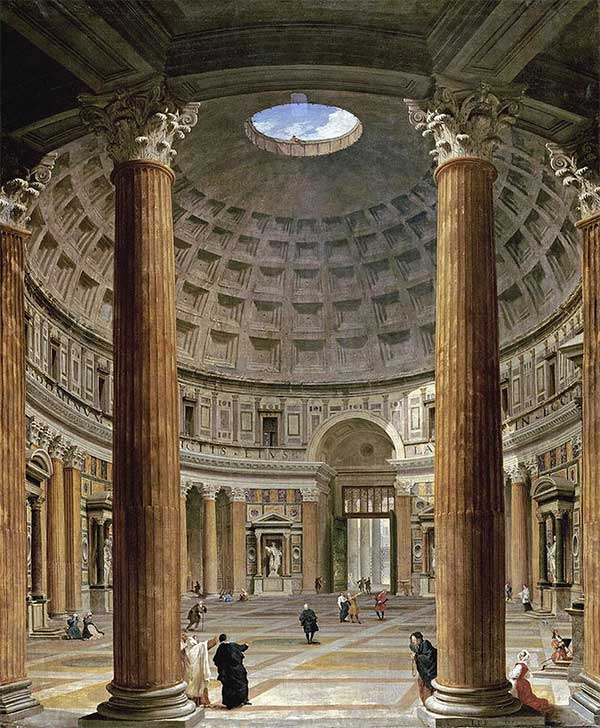As one of the wonders of the capital city of Rome (Italy) and a pride of ancient Romans, the architecture of the Pantheon has long been regarded as an unshakeable pinnacle.

The Pantheon – (Photo: WIKIPEDIA).
The Pantheon features the largest unreinforced concrete dome in the world. This heritage is one of the architectural marvels of the ancient Roman Empire.
Having been built for over 2,000 years, the durability of Roman concrete has long puzzled experts.
Modern concrete can collapse within a few decades. So, how did the ancient Romans achieve this?

Interior view of the Pantheon – (Photo: TRIPSAVVY).
Now, scientists believe they have discovered a secret in the ancient formula that gives the building material self-healing properties: quicklime.
According to The Telegraph, experts from MIT and Harvard (USA) found that adding quicklime to the building material mix creates an extremely hot chemical reaction that produces calcium deposits.

Distinctive dome architecture of the Pantheon – (Photo: CITY WONDERS).
By studying the lime layer in ancient concrete, experts discovered calcium deposits scattered throughout the surface of the concrete.
Importantly, if cracks begin to appear later and water seeps through, these calcium deposits crystallize into calcium carbonate, filling the gaps.

Roman columns in the Pantheon – (Photo: ROME TICKETS).
The reactions occur spontaneously, healing the cracks before they expand further. This prevents damage to the structural integrity.
This discovery explains why the largest unreinforced concrete dome in the world at the Pantheon remains intact, even though it was built in 128 AD. Meanwhile, many modern concrete structures crumble within just a few decades.

Close-up of the water basin in front of the Pantheon – (Photo: MAMA LOVES ROME).
What does this mean for modern concrete production? Researchers indicate that this self-healing ability could pave the way for producing more durable and sustainable modern concrete. The team is working to reintroduce Roman concrete as a commercial product. The research was published in the journal Science Advances. |


















































